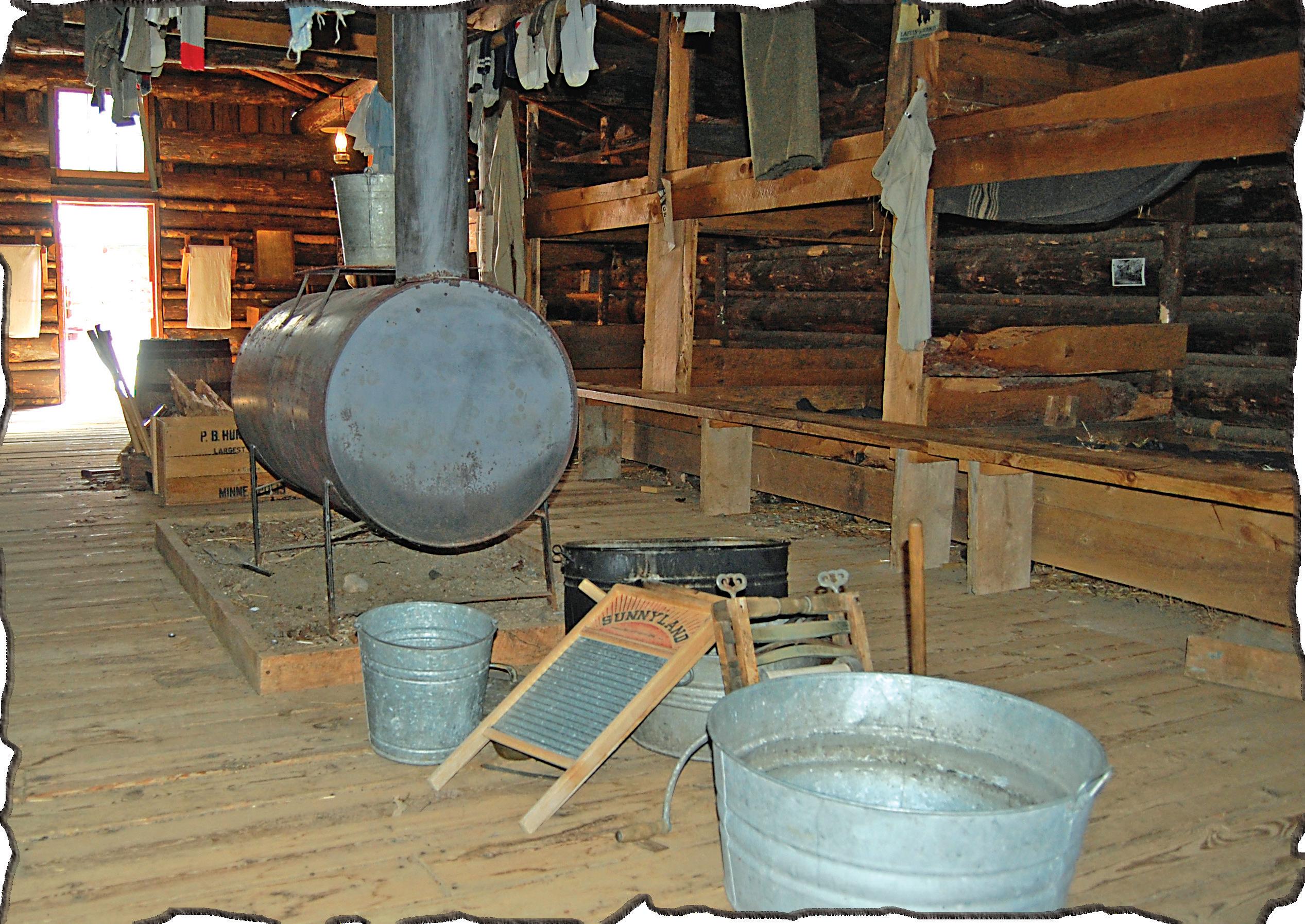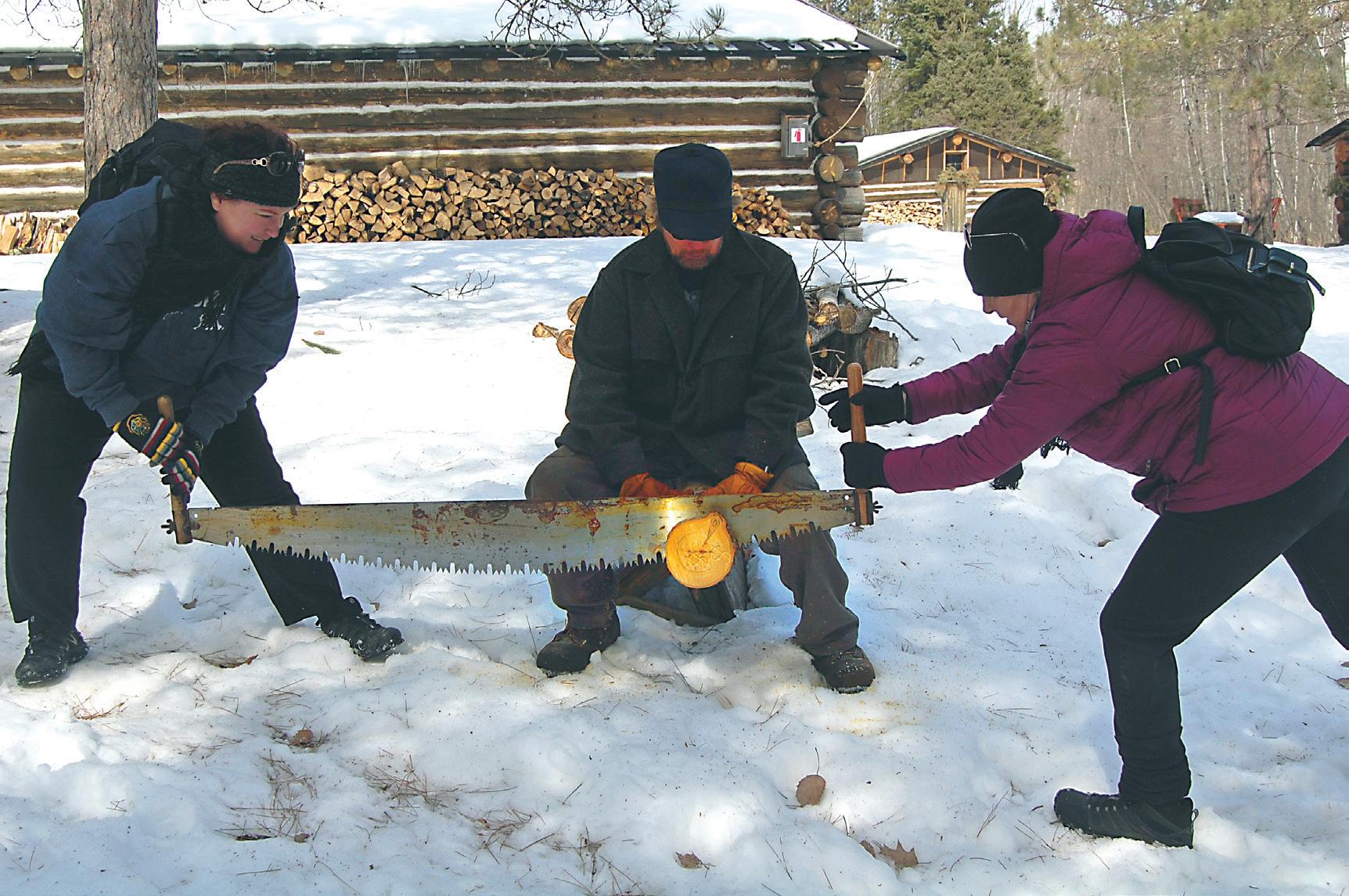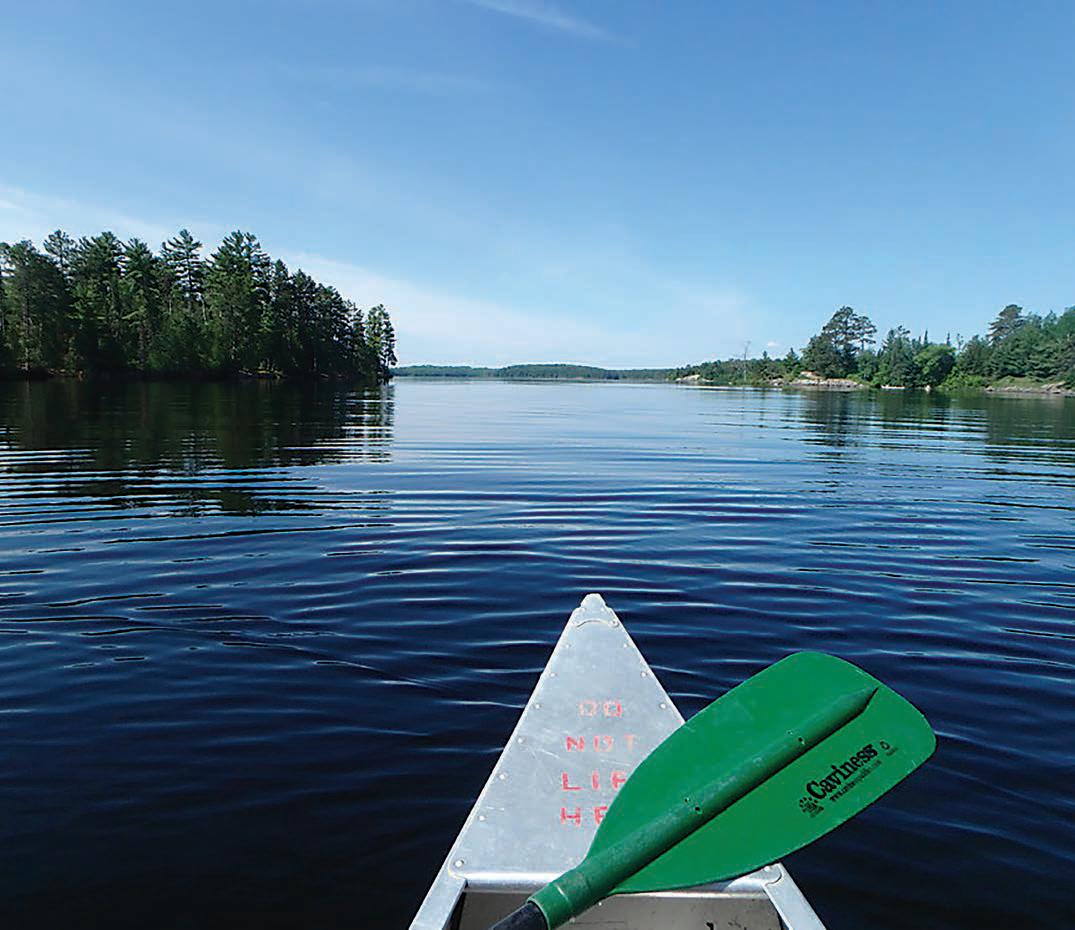
3 minute read
Logging history brought to life
Visit the Forest History Center in Grand Rapids for a hands-on, century-old experience

STORY AND PHOTOGRAPHY BY KATHLEEN MURPHY
Logging plays an important part in Northern Minnesota’s history, though it might be hard to recognize today. Let the Forest History Center in Grand Rapids bring that history to life with a tour of a 1900s-era logging camp. Staffed with knowledgeable and enthusiastic interpreters who refer to themselves as “barn boss” and “bull cook” — along with the expected “lumberjack” — it’s hard to remember what century we’re in.
“The Forest History Center is a multi-sensory experience,” said Brian McCauley, site supervisor for the center. “Rather than reading a book about the history of logging and how it affected Minnesota, you can see it all with your own eyes. But you also have the smell of the cook camp, the touch of the saw, and the sounds of the draft horses at work.”
The tour begins in the indoor visitor center, which has several fun hands-on exhibits. A modern day timber harvester simulator proved an exciting stop for the kids, as did the mid-century logging truck cab with videos projected onto the windshield. The multimedia theater showed an engaging show on forest fires, highlighting the 1918 Cloquet Fire.
Once outside, the kids will want to climb the fire tower, of course. At 100 dizzying feet, it is the only fire tower in Minnesota that visitors are allowed to climb. From there, explore the 1934 Minnesota Forest Service patrolman’s cabin before heading to the logging camp. Several signs along the short trail leading to the camp remind visitors of the date they’ll find themselves in upon arrival: December 15, 1900.

Visitors usually begin at the camp store, where ancient medicinal bottles and food stuffs clutter the shelves behind the counter. Read through handwritten books that list supplies purchased by logging camp inhabitants from over a century ago, including the vague, often seen item titled “Climax,” which the interpreter told us was a brand tobacco. Tour the sleeping camp (which sleeps 72 people, two to a bunk), cook camp and the fully stocked blacksmith shop, complete with working forge and anvil. Next, marvel at the logging sleigh and water wagon, both so gigantic, it’s hard to imagine even a pair of muscular draft horses being able to move them, until one remembers that the wagons are on skis and pulled only over specially made ice roads.
All along the way, interpreters in period costume greet guests with a smile and a wealth of knowledge, regaling the crowds with stories of life in a 1900s logging camp. Demonstrations are scattered throughout the day, such as lumberjacks showing visitor how to use a crosscut saw (only pull, never push!) and the draft horses tackling up to do what they do best — move heavy logs. Guests are often referred to as “greenhorns,” as though they are new workers in the camp, just learning how to fit into the lumberjack life.
Several miles of hiking trails surround the museum, including a short trail that leads to a small bay off the Mississippi River. Here visitors find the wanigan, a barge-like cook shack and bunk house that served as the temporary home for the “river drivers” — the people who supervised the log drive down the river.
Look on the Forest History Center’s website for special events to be held this summer, such as “Be a Lumberjack Family Day” on Saturday, June 16, and “Real Horsepower Day” on Aug. 25. The activities don’t end just because summer did. From September through April, guests can still visit the center on weekends and take part in

“Into the Woods,” a series of programs held once to twice a month by naturalists, birders, foresters, artists, storytellers, musicians, and historians. September 15, for example, will be “Critter Day”.
The Forest History Center isn’t the only place to enjoy when travelling to Grand Rapids. After the kids have thoroughly explored the Forest History Center, take a short drive into town and enjoy lunch at Brewed Awakenings Coffeehouse, where parents can enjoy $1 coffee or tea, and kids can enjoy after-lunch gelato (free if over $20 is spent on lunch). The Grand Rapids Visitor Center is worth a visit with the kids, as it shares a building with the Northwoods Candy Company, a delightful candy shop that proudly declares “boozhoo! biindigen!“ on its sign. In other words: “Hello! Come in!” in Ojibwe.
Grand Rapids has other attractions the family can hit in the afternoon, such as the Judy Garland Museum, located in the house where her family lived when she was young. The museum holds the world’s largest Judy Garland and Wizard of Oz collection in the world. Don’t think that will hold the attention of your youngest child? No worries, the museum shares a building with the interactive Children’s Discovery Museum.
If more outdoor activity time is needed, try out Hill



Forest History Center
2609 County Road 76 Grand Rapids, MN 55744 sites.mnhs.org/historic-sites/foresthistory-center
Hours: Through June 10: Saturday, 10 a.m.-4 p.m. June 11-Sept. 3: Tuesday-Saturday, 10 a.m.-5 p.m.



Closed Sunday and Monday
Annex Mine State Park. The kids can hunt for – and keep! - Cretaceous era fossils in the former open pit mine. For a more relaxing view of the mine, take the bus tour that traces the route miners had to take to reach the working level of the mine.
Need dinner to tide everyone over for the 90 minute ride back to Duluth? Grand Rapids has a Sammy’s Pizza.










